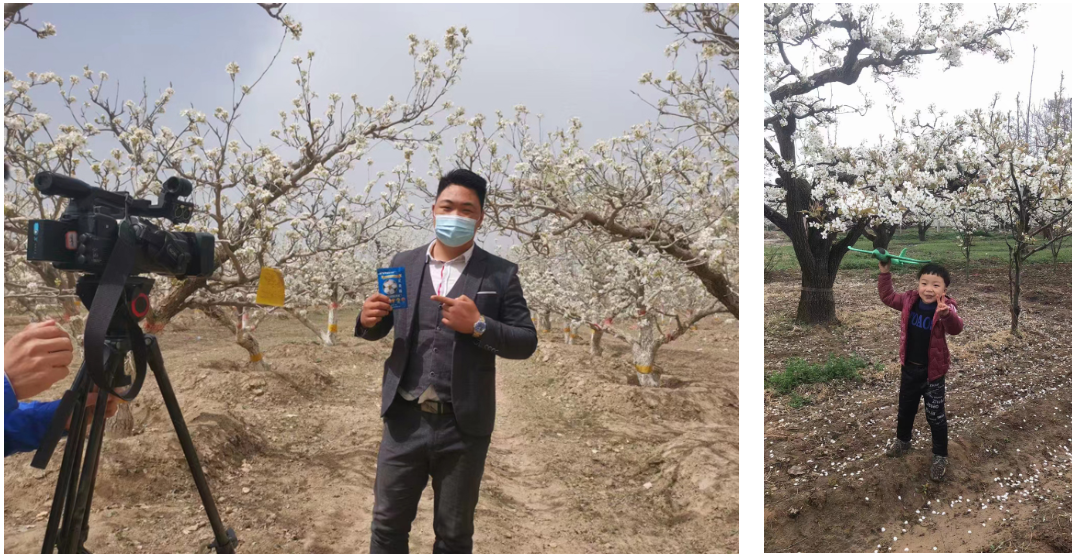Dec . 04, 2024 16:22 Back to list
Optimal Pollen Management Strategies for Effective Pollination in Apple Orchards
Active Pollen for Pollination in Apple Orchards A Comprehensive Overview
Pollination is a critical factor in the successful cultivation of apple orchards. The presence of active pollen, which is essential for fruit set and quality, plays a significant role in the yield of apple crops. Understanding how active pollen affects pollination can help growers optimize their orchards for maximum productivity. This article explores the importance of active pollen in apple orchards, the role of pollinators, and practical strategies for enhancing pollination.
The Importance of Active Pollen
Active pollen is the crucial male gametophyte in flowering plants, including apple trees. For apples, pollen viability and its availability during the flowering period directly influence the quantity and quality of the fruit produced. When a bee or other pollinator transfers pollen from the male parts of the flower (anthers) to the female parts (stigmas), fertilization occurs, leading to fruit development. High levels of active pollen ensure that fertilization is successful, and subsequently, fruit set is maximized.
In apple orchards, there are two main species of apple trees that are significant for pollination the self-pollinating varieties and those that require cross-pollination. While self-pollinating varieties can produce fruit without another apple tree, better yields are often achieved when they cross-pollinate with other varieties. This is where the role of active pollen becomes even more crucial—ensuring a diverse genetic pool enhances fruit set and can improve the quality and flavor of the apples.
Pollinators Friends of the Orchard
Pollinators, such as honeybees, bumblebees, and various other insects, are vital for effective pollination in apple orchards. The presence of these pollinators not only facilitates the transfer of active pollen but also increases the chances of cross-pollination, which leads to better fruit quality and higher yields. It is estimated that about 80% of flowering plants benefit from animal pollination, and apple trees are among those that significantly rely on these services.
To attract and maintain a healthy population of pollinators, orchard managers should consider practices that create a pollinator-friendly environment. Planting native wildflowers, providing nesting sites, and minimizing pesticide use during bloom periods can significantly enhance the presence of pollinators in the orchard.
Enhancing Pollination in Apple Orchards
active pollen for pollination in apple orchards exporter

To optimize active pollen availability and enhance pollination success in apple orchards, several strategies can be adopted
1. Varietal Selection Choose a mix of apple varieties that are known for compatibility and pollination efficiency. Having a diverse genetic makeup attracts various pollinators and promotes effective cross-pollination.
2. Timing and Bloom Synchronization Coordinating the blooming periods of different apple varieties is crucial. Ensuring that the first bloom of one variety coincides with the appearance of another can maximize the availability of active pollen when pollinators are present.
3. Habitat Management Establishing flower strips within or adjacent to the orchard can draw pollinators into the area, ensuring they have access to food sources during the critical pollination period. Creating hedgerows or conserving natural habitats nearby can also support healthy pollinator populations.
4. Monitoring Pollen Viability Orchard managers can benefit from regular monitoring of pollen viability during the blooming season. This can involve collecting and analyzing pollen samples to determine their active status and adjusting practices as needed to optimize pollination.
5. Education and Outreach Educating orchardists about the significance of active pollen and the role it plays in successful fruit production can foster a greater understanding of integrated pest and pollinator management.
Conclusion
Active pollen is a linchpin in the successful pollination of apple orchards. By fostering conditions that promote the availability of viable pollen, encouraging pollinator visits, and selecting complementary apple varieties, growers can significantly enhance the productivity and quality of their harvests. Understanding the symbiotic relationships between pollen, pollinators, and apple trees enables orchard managers to make informed decisions that lead to flourishing apple orchards and bountiful yields. In a world increasingly aware of sustainability and biodiversity, practices that support active pollen and pollination are not just beneficial; they are essential for the future of apple cultivation.
-
Pollen Peach Tree for Pure Pollination and High-Quality Peach Pollen
NewsJul.30,2025
-
Premium Cherry Pollen for Pure Pollination & Different Types
NewsJul.30,2025
-
Artificial Pollination Solutions for Various Plant Pollen Types
NewsJul.29,2025
-
Artificial Pollination Solutions for All Plant Pollen Types
NewsJul.29,2025
-
Premium Plant Pollen for Pure Pollination & Pollen Block Solutions
NewsJul.29,2025
-
Artificial Pollination Solutions for Efficient Crop Yields
NewsJul.28,2025